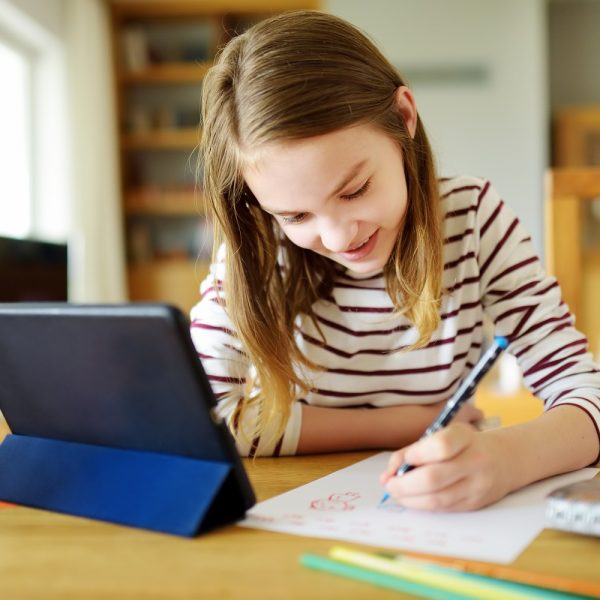Homer Learning App

We’ve looked at learning apps such as IXL or Khan Academy in the past, but today we are going to look at a learning app that address a subject area that other learning apps tend not to touch on. Where the apps mentioned above are ideal for core subjects such as math or reading, the app that we are looking at today puts a lot of emphasis on social and emotional learning, creativity, and thinking.
Homer Learning App is a highly rated (and frequently downloaded) app that is accessible via iOS, Android, PC, and Mac. The app offers a free trial, and monthly memberships starts at $9.99 CDN. Each account includes four customizable profiles, so parents with multiple children will get even more value out of this app.
The app uses illustrated stories to model a variety of day-to-day social interactions. The stories are centered around learning empathy and building perspective of the outside world. There is also an emphasis put on friendships, and the skills required to build and maintain them. The illustrations are well-drawn and interesting, something that is often lacking in similar apps.
Homer also puts a lot of emphasis on fostering creativity in children, and it does so using unique, well-designed lessons. One activity has users creating art in response to prompts, and another has them creating their own stories. Not only is this emphasizing creative expression, but it provides children with an alternative output for the stresses of their daily lives. Looking at these activities, it is clear that a great deal of thought was put into Homer Learning.
Critical thinking skills are taught through games and activities that teach children cause and effect, resourcefulness, following instructions, and linking learning to every day life. These activities tend to give users a high level of control, and independent learning is heavily emphasized.
Memory building activities are also offered through Homer, with a variety of activities being available. Not only does the app offer tried and tested matching games, but it also builds memory through stories and songs that encourage memorization and repetition.
Overall, the app is well-designed, the animations and stories are engaging, and the variety of activities is hard to beat. For children who struggle with learning, (especially in the area of social and emotional learning), Homer Learning is definitely an app worth considering. To learn more about the app, click here.
This post originally appeared on the AT Help Desk website.
Math Melodies

Math can be difficult enough for many of us (this author included), but imagine what it’s like for children with disabilities who ALSO struggle with basic math concepts? Imagine you are trying to learn the fundamentals of math in grade 1, and you cannot fully see the equations that you are being asked to solve. Today, we’re going to look at an app that seeks to solve that very problem, and it does so for free!
Math Melodies is a free app for iPad that uses audio cues to introduce and practice math concepts that are traditionally taught and tested on paper. Users can choose between a ten-chapter story mode, or they can choose between a variety of exercises that cover concepts learned between 1st and 5th grade. Each exercise also gives the option of choosing between base and advanced level lessons.
Resource Review: AT Help Desk One Pagers

In case you aren’t aware, our AT Help Desk posts a variety of informative resources for teachers, students, and persons with disabilities underneath of the “Resources” section of the AT Help Desk website.
This week we wanted to quickly throw a spotlight on our “One-Pagers” section. One-pagers are short, informational documents that provide step by step instructions to a variety of digital tasks related to assistive technology.
We Have Solutions! – Episode 12: Ergonomics and Occupational Therapy with Alain Desir

On today’s episode of “We Have Solutions,” we’re joined by Occupational Therapist Alain Desir. Tune in as we explore all things OT, including case studies, tips for good ergonomics, success stories, and more.
The Sounding Out Machine

We’ve looked at quite a few reading apps in the past, and most of the apps that we’ve looked at provide users with an impressive suite of useful reading options from highlighting text to reading it out loud. And while those apps are incredibly useful, especially for learners who already understand how to read, they’re not usually designed to dive too far into the fundamentals of writing. The app that we are looking at today is designed for learners who are just starting to read, and don’t yet require the additional features that we’ve mentioned above.
TD Snap

AAC apps and devices tend to be highly specialized and expensive pieces of hardware, which is probably why we haven’t spent that much time talking about them. These devices also tend to be recommended by speech language pathologists, so we would always recommend first meeting with a member of the New Brunswick Association of Speech-Language Pathologists and Audiologists if you or someone you know might benefit from this type of technology.
However, the app that we are looking at today is a fraction of the cost of a typical piece of AAC hardware, and rather than having to buy a new piece of standalone technology, TD Snap harnesses the power of iOS to transform an iPad into an AAC device. This also means that persons with disabilities have even more customization and accessibility options due to iOS’s built-in features. Thanks to those built-in accessibility features, the app can be accessed via touch, voice commands, eye gaze, and switch.
Grammarly: The Anywhere Writing App

Word processing apps have evolved dramatically since the advent of the internet. In the early days of computing, word processing apps were expensive, tedious, and often required extensive training to use. Then, Microsoft Word streamlined the genre and made it more accessible and easier to use. Then, with the popularity of smartphones came a flood of mobile-based word processing and grammar apps designed to help users write while on the go.
Today we are going to look at one of the most popular (certainly the most widely known) app in that category, Grammarly. The app is free, but there is also a premium version with even more features. We’re going to take a closer look at those features today and do a bit of comparing between the two versions of the app.
SnapType

For individuals with fine motor or other handwriting-related challenges, completing worksheets in a timely manner may seem like an insurmountable struggle. Of course, we know that there are Optical Character Recognition (OCR) apps such as Prizmo Go or Office Lens that are designed to capture and digitize text, but those apps are more suited for capturing large chunks of text from a textbook or document with the purpose of having it read aloud.
We Have Solutions! – Episode 11: Speech Loss, New Technology, and App Recommendations with Nakia Singh

On this episode we are joined once again by Nakia Singh. We explore some interesting new assistive technology apps and devices including a solar powered keyboard, a distraction-free browser, a wearable metronome and more. We also explore a new case study involving an individual dealing with speech loss at an advanced age.
Kurzweil 3000

Most of the AT that we cover is fairly specific in its functionality, but today we are going to look at an app that functions more like an assistive technology suite, providing multiple functions and features designed for multiple learning challenges.
Kurzweil 3000 is a literacy tool that is designed to assist with reading, writing, comprehension, and test-taking, and it does so within one unified app. The software is expensive, especially when compared to the cost of an iPad which has most of Kurzweil’s features already built-in for free, but if you struggle in ALL of the areas listed above, it could be worth considering, especially if you are used to a Windows-based learning environment.



